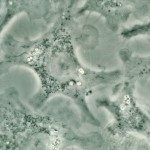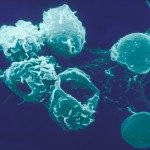Lien vers Pubmed [PMID] – 17982046
J. Immunol. 2007 Nov;179(10):6568-78
In common laboratory mouse strains, which are derived from the crossing between three subspecies, peritoneal B cells are enriched in B-1a cells characterized by the CD5(+)Mac-1(+)B220(low)IgM(high)IgD(low)CD43(+)CD9(+) phenotype. Intriguingly in other vertebrates, CD5(+)Mac-1(+) cells have never been found in a specific anatomic site. To ascertain the peculiarity of the CD5(+) peritoneal B cells in laboratory mice, we analyzed the peritoneal B cell subsets in 9 inbred and 39 outbred wild-derived mouse strains belonging to 13 different species/subspecies. We found that most of these strains do not have the CD5(+) B-1a cell population. However, all of these strains including classical laboratory mouse strains, have variable proportions of a novel B cell population: Bw, which is characterized by a unique phenotype (CD5(-)Mac-1(+)B220(high)IgM(high)IgD(high)CD43(-)CD9(-)) and is not restricted to the peritoneal cavity. Bw cells are also distinct from both B-1 and B-2 cells from a functional point of view both by proliferative responses, cytokine secretion and Ab synthesis. Moreover, transfer experiments show that bone marrow and fetal liver cells from wild mice can give rise to Bw cells in alymphoid mice. The conservation of this B cell population, but not of the CD5(+) B-1a, during evolution of the genus Mus, its readiness to respond to TLR ligands and to produce high concentration of autoantibodies suggest that Bw cells play a key role in innate immunity.

